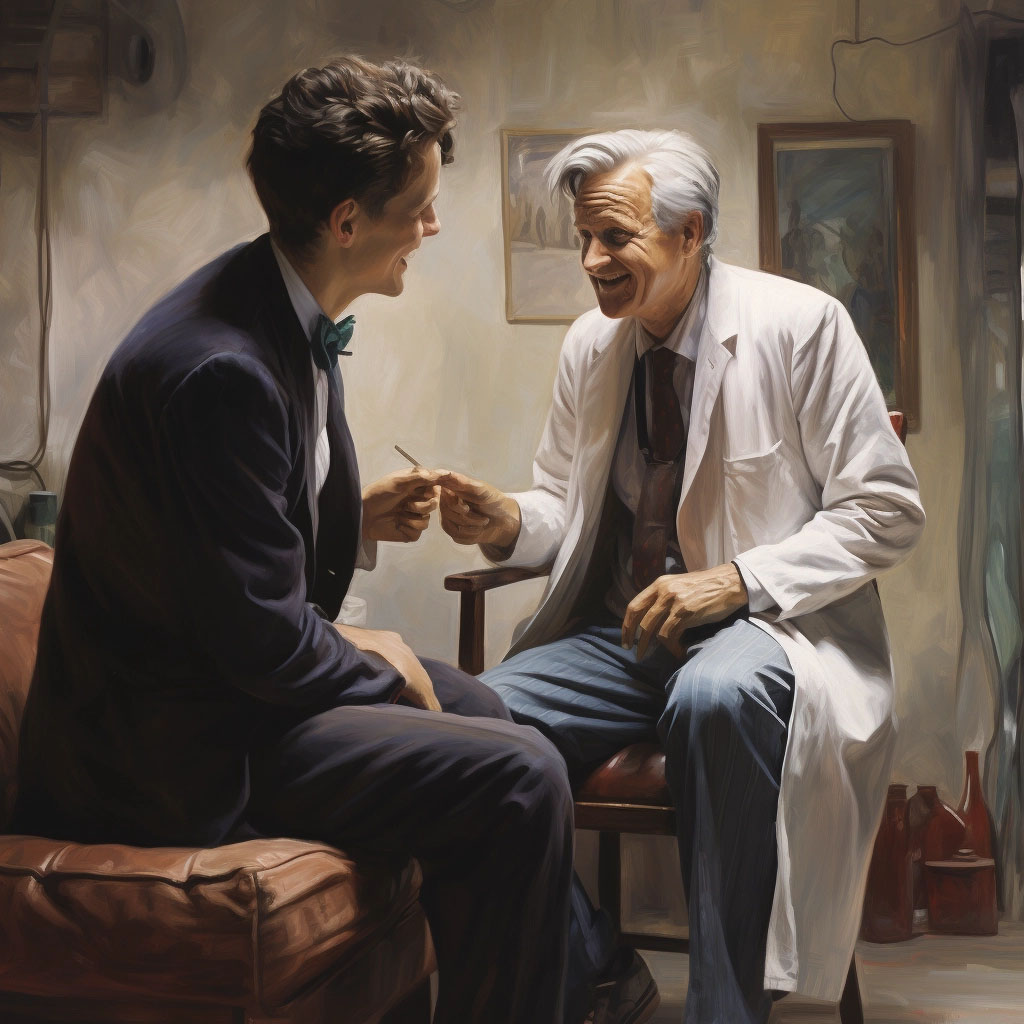Erectile Dysfunction (ED) is an uninvited guest at men’s health parties, showing up more frequently than most would care to admit. Yet, it’s as common as the cold, affecting a vast brotherhood across the globe. The whisper of its name might still send a shiver down the spine of the bravest, but it’s time to shed light on this shadowy figure.
What is E.D.?
At its core, Erectile Dysfunction is the consistent inability to get or keep an erection firm enough for sexual intercourse. It’s like trying to start a car; sometimes, the engine roars to life effortlessly, while at other times, it sputters and refuses to start. And just like with cars, occasional issues don’t mean it’s time for a scrap heap, but persistent trouble might require a mechanic—or in this case, a doctor. Understanding ED is important, not just for a guy’s sexual health but for his overall well-being. And let’s be honest, ED has been the butt of jokes for far too long, but it’s a condition that deserves a spotlight for serious discussion—though a little humor can help lighten the mood as we tackle the topic.
The Prevalence of ED Among Men Aged 35-60
If you think you’re the lone ranger facing the ED challenge, think again. Studies show that a significant portion of the male population, especially those cruising through the midlife boulevard between 35 and 60, experience some form of erectile difficulty. It’s so common, in fact, that if ED were a club, it would have more members than that gym you swear you’ll start going to next Monday. The truth is, ED doesn’t discriminate, affecting men of all ages and backgrounds. So, next time you’re feeling a bit isolated in your ED battles, remember: there’s a vast community of brothers-in-arms, proving that this condition is far from a solo journey.
Hard Truths: Uncovering the Reality Behind ED Myths(Opens in a new browser tab)

Behind the Scenes: The Physiology of an Erection
Understanding the magic behind an erection is like peeling back the curtain on a complex biological performance. It all starts in the brain, which fires off signals down to the nether regions when it senses sexual excitement. Blood vessels then spring into action, opening wider to increase blood flow into the penis. Here’s where it gets interesting—like a hydraulic system, the penis fills with blood, which is then trapped under pressure, leading to an erection. It’s a fine-tuned process involving nerves, blood vessels, muscles, and hormones all working together in harmony. But just like any sophisticated machinery, various factors can throw a wrench in the works. Physical issues like heart disease or diabetes, psychological factors such as stress or anxiety, and hormonal imbalances can all play the villain in this story, disrupting the erectile equilibrium. So, while the process might sound as straightforward as flipping a switch, the reality is more akin to orchestrating a symphony—where every instrument needs to be in tune for the performance to go off without a hitch.
Common Causes of ED
The culprits behind Erectile Dysfunction can often feel like a lineup of usual suspects, with a few surprise guests. On the physical side, cardiovascular health is a leading actor, as a robust blood flow is essential for keeping the flag flying. Conditions like diabetes can also crash the party by damaging nerves and blood vessels. It’s not just about the hardware, though. The software, aka our mental health, plays a significant role. Stress and anxiety can turn “not tonight, honey” from a sitcom punchline to a nightly reality. It’s as if your brain decides to run a background anxiety app that drains your sexual battery. These factors blend together, creating a perfect storm that sometimes might be too potent for your sexual health to handle. It’s not just about one bad night; it’s a mix of factors that could be putting a damper on the fireworks.
Lasting Solutions: Proven Strategies to Overcome Premature Ejaculation(Opens in a new browser tab)
| Relevant Data and Statistics |
| Prevalence of ED: Approximately 52% of men between the ages of 40 and 70 experience some form of Erectile Dysfunction. |
| Impact of Lifestyle Choices: Studies show that men who engage in regular physical activity have a 30% lower risk of ED compared to sedentary men. |
| Psychological Factors: Around 20% of ED cases are believed to be primarily caused by psychological factors such as stress, anxiety, and depression. |
| Cardiovascular Health Connection: Nearly 40% of men over the age of 40 with ED have some degree of cardiovascular disease. |
| Treatment Success Rates: Over 70% of men using prescribed ED medications like sildenafil (Viagra) report improved erections and sexual performance. |
Modern Solutions: Treating and Managing ED
Navigating the waters of ED treatments can feel like scrolling through a questionable online marketplace. You’ll find everything from the “ancient secret herbs” to gadgets promising to reboot your love life. But here’s the deal: there are legitimate, scientifically backed treatments out there. Medications like Viagra and Cialis have become almost as recognizable as Coca-Cola, offering a real boost for many men. Then there’s the world of lifestyle changes—yes, hitting the gym and cutting back on the burgers can actually help resurrect your sex life. And don’t forget the power of professional help. A good chat with a healthcare provider can offer more relief than any dubious online cure. So, while the internet is a treasure trove of information, remember, not all that glitters is gold, especially in the realm of medical advice.

Embracing a Healthy Outlook on ED
Wrapping up our no-fluff guide, it’s clear that understanding and addressing Erectile Dysfunction is both a personal journey and a collective endeavor. So, let’s keep the conversation going, tackle the issue head-on, and remember, when it comes to ED, we’re all in this together—figuratively speaking, of course.



